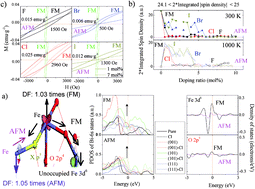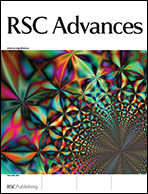Effects of halogen substitutes on the electronic and magnetic properties of BiFeO3
Abstract
To observe the high-temperature ferro-electricity at room-temperature, we used a halogen to create a 2p-hole for improving O–Fe p–d electronic transition, and calculated the systematic variations in electronic and magnetic properties using first-principle calculation. The systems prefer to charge disproportionate as Fe3+–O2−–Fe2+ with the highly localized halogen concentration increasing, where the O-site halogen creates a 2p-hole to disproportionate Fe charge from Fe3+-d5 orbital with a full-filled triple degeneracy orbits (t2g) orbital to Fe2+-d5–d0 with a partially filled t2g orbital. Whatever at room-temperature or high-temperature phase, the halogen substitutes, typically, for F (or Cl)-doping, induce the electrons to transfer from O-2p4 → unoccupied Fe3+-3d5 to O-2p4→Bi3+-6p3, while the ferromagnetic (FM)–anti-ferromagnetic (AFM) phase transits at about 1 atom per cell. Furthermore, to retain O–Fe electron transfer process, we applied the crystallographic anisotropy to produce the strong Fe–O orbital hybridization which offsets the effect of 2p-hole, and it causes more significant O-2p4 → unoccupied Fe3+-d5 electronic transitions at the valence band. This study opens a new perspective to the development of multiferroic devices with independent temperature.


 Please wait while we load your content...
Please wait while we load your content...